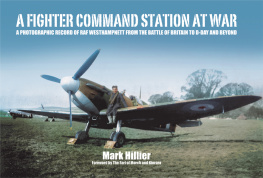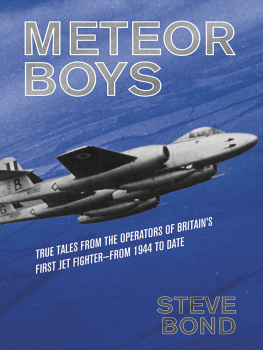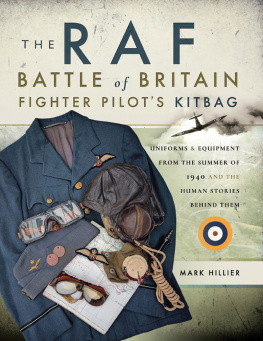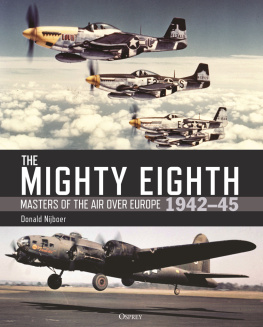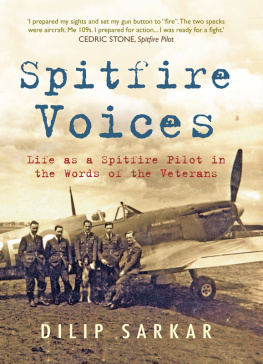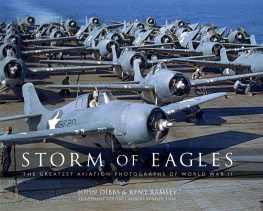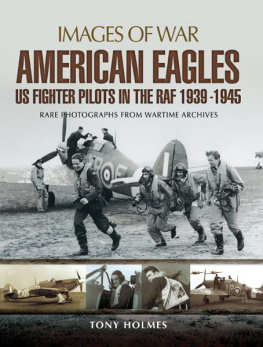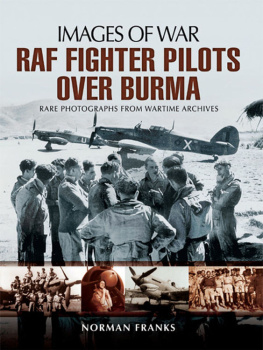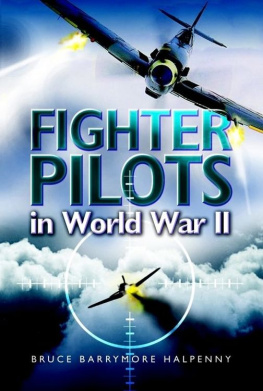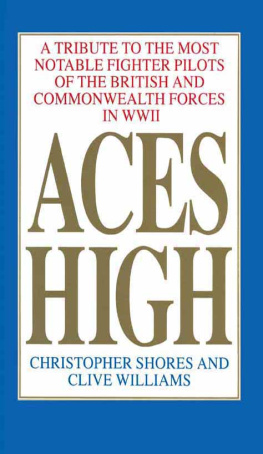Hiller - A Fighter Command Station at War
Here you can read online Hiller - A Fighter Command Station at War full text of the book (entire story) in english for free. Download pdf and epub, get meaning, cover and reviews about this ebook. year: 2015, publisher: Frontline Books, genre: Non-fiction. Description of the work, (preface) as well as reviews are available. Best literature library LitArk.com created for fans of good reading and offers a wide selection of genres:
Romance novel
Science fiction
Adventure
Detective
Science
History
Home and family
Prose
Art
Politics
Computer
Non-fiction
Religion
Business
Children
Humor
Choose a favorite category and find really read worthwhile books. Enjoy immersion in the world of imagination, feel the emotions of the characters or learn something new for yourself, make an fascinating discovery.
- Book:A Fighter Command Station at War
- Author:
- Publisher:Frontline Books
- Genre:
- Year:2015
- Rating:5 / 5
- Favourites:Add to favourites
- Your mark:
- 100
- 1
- 2
- 3
- 4
- 5
A Fighter Command Station at War: summary, description and annotation
We offer to read an annotation, description, summary or preface (depends on what the author of the book "A Fighter Command Station at War" wrote himself). If you haven't found the necessary information about the book — write in the comments, we will try to find it.
Hiller: author's other books
Who wrote A Fighter Command Station at War? Find out the surname, the name of the author of the book and a list of all author's works by series.
A Fighter Command Station at War — read online for free the complete book (whole text) full work
Below is the text of the book, divided by pages. System saving the place of the last page read, allows you to conveniently read the book "A Fighter Command Station at War" online for free, without having to search again every time where you left off. Put a bookmark, and you can go to the page where you finished reading at any time.
Font size:
Interval:
Bookmark:
This book is dedicated to the memory of those pilots and personnel who served,
and sometimes made the ultimate sacrifice,
whilst flying from or were based at RAF Westhampnett.

A FIGHTER COMMAND STATION AT WAR
A Photographic Record of RAF Westhampnett from the Battle of Britain to D-Day and Beyond
This edition published in 2015 by Frontline Books,
an imprint of Pen & Sword Books Ltd,
47 Church Street, Barnsley, S. Yorkshire, S70 2AS.
Copyright Mark Hillier, 2015
The right of Mark Hillier to be identified as the author of this work has been asserted by him in accordance with the Copyright, Designs and Patents Act 1988.
ISBN: 978-1-47384-468-1
PDF ISBN: 978-1-47384-471-1
EPUB ISBN: 978-1-47384-469-8
PRC ISBN: 978-1-47384-470-4
All rights reserved. No part of this publication may be reproduced, stored in or introduced into a retrieval system, or transmitted, in any form, or by any means (electronic, mechanical, photocopying, recording or otherwise) without the prior written permission of the publisher. Any person who does any unauthorized act in relation to this publication may be liable to criminal prosecution and civil claims for damages.
CIP data records for this title are available from the British Library
Printed and bound by CPI Group (UK) Ltd, Croydon, CR0 4YY
Typeset in 9/11 point Palatino
For more information on our books, please email: ,
write to us at the above address, or visit:
www.frontline-books.com
CONTENTS
by The Earl of March and Kinrara
by Lieutenant Commander Mike Abbey MBE, MSc
FOREWORD
The history of Westhampnett has always interested me, not just because its on the Goodwood estate, but because it was from the perimeter roads of the aerodrome that my Grandfather created the motor circuit back in 1948. So I am delighted to be writing the Foreword for a book that records, and preserves, the history of the place.
I have so many happy childhood memories of the Easter Monday race meetings, watching with my Grandfather in his little caravan by the chicane and meeting all the famous drivers. This was where my passion for motor racing began, where the inspiration to revive the circuit came from in 1998, and why we stage the Goodwood Revival every year.
The Revival is not simply a race meeting, its also a celebration of both the pilots and the aircraft that flew from here in the Second World War. Mark Hilliers finely detailed book reminds us of Westhampnetts vital role as a frontline wartime base, so when the Spitfires, Hurricanes and Mustangs fly here each September we remember the skill and bravery of the men who went into those dogfights with so little training.
Until I looked at the remarkable photographs collected for A Fighter Command Station at War, I hadnt fully appreciated the importance of RAF Westhampnett in some of the biggest air battles of the war. Many of the pilots who fly from Goodwood aerodrome today feel that sense of history, aware that they are using pretty much the same grass runways used by the men who went to the Dieppe Raid, the D-Day landings, and the Battle of Normandy.
It was, I learnt, a truly international community as well, with pilots from America, Canada, France, Poland, New Zealand and Belgium. Apparently the locals werent too keen on the noise of the Typhoons with their huge Napier Sabre engines. Thankfully, things are a lot quieter at our aerodrome these days.
Immediately after the war, as the country gradually got back on its feet, the sport of motor racing needed a new home and aerodromes were the perfect place to start. It was an RAF fighter pilot, Tony Gaze, who alerted my Grandfather to Westhampnetts potential as a circuit and its thanks to him that we have the historic track that we still use to this day.
This book takes us back in time and I hope you will enjoy the journey as much as I did. The skill and courage of the Westhampnett pilots must never be forgotten.
Earl of March and Kinrara
Goodwood, 2015
A PILOTS PERSPECTIVE
My final appointment in the Royal Navy was Commanding Officer of the Royal Navy Historic Flight, which for me was a marvelous way to end thirty-seven years as a Fleet Air Arm pilot. After retirement from the Royal Navy, I was fortunate to become involved with the Boultbee Flight Academy, based at Goodwood Aerodrome, as a flying instructor. The Academy was formed to teach modern pilots to fly the Spitfire. Consequently, it has a fleet of vintage aircraft to replicate the process a Second World War pilot would have undertaken before becoming operational in a Spitfire. Operating from the former RAF Westhampnett adds a huge amount to that experience as the fabric of the airfield has changed very little since the 1940s.
The link between the Fleet Air Arm and RAF Westhampnett is very strong. The last military flying unit based at the aerodrome was 787 Naval Air Fighting Development Unit. It operated Barracudas, Avengers and Wildcats before handing the airfield back to the Goodwood Estate in 1946. Many Fleet Air Arm pilots served with the RAF during the Battle of Britain and afterwards. Some flew from Westhampnett, including Colin Hoppy Hodgkinson and Sub Lieutenant Francis Alan Smith RN, the later killed during the Battle of Britain.
Flying from Goodwood today has changed very little since it was created on little more than farmland in the Second World War. The airfield still has grass runways and becomes soft and boggy during the winter months after a good downpour.
The opportunity to make a low pass over Chichester Cathedral in a Spitfire on a Sunday morning is long gone, but once in the air and you have filtered out the urban sprawl, the scene from the cockpit is exactly the same as 1940; Selsey Bill to the south, Isle of Wight and Portsmouth to the West, and the South Downs to the East. It does not take much imagination, especially when you are sat in a Spitfire, to visualize what it must have been like flying in that piece of airspace during the war.
The many visitors who come to fly in the Boultbee Flight Academys Spitfire TR9 (a two-seat variant) often ask about the history of Goodwood Aerodrome. Whilst it is always a pleasure to recount the history of the place, Mark Hilliers book provides all the answers for us and gives a unique and detailed insight into the actual life of A Fighter Command Station at War.
Lieutenant Commander Mike Abbey MBE, MSc, RN
Goodwood, 2015
INTRODUCTION
The sky is blue and the wind light as I pull the aircraft out for its pre-flight inspection, eager in anticipation of another flight over the beautiful countryside of West Sussex and the South Downs.
I climb in and perform my cockpit checks. I prime the engine, shout clear prop and push the starter. The engine barks in to life and I gently allow it to warm up prior to taxiing to the holding point. With pre-take-off checks done, I take a quick look at the wind direction whilst I line up. Making sure the tail wheel is straight, I push the power on and inch the stick gently forwards to get the tail up. I nudge the right rudder to correct the swing as I charge down the runway. I am airborne at 75mph and climbing in to the wild blue yonder in a 1943 Boeing Stearman biplane.
No German fighters to watch out for today, just a quick local trip. I take the Stearman and slip the surly bonds of earth, carefree!
Having flown from Goodwood for a number of years, I had known for a while that the airfields origins date back to the Second World War. For many years I did not bother to research its history any further, or seek to find out what squadrons had been based there. That interest was sparked after being asked to write an article on 602 Squadron for a magazine. For many months I scoured the bookshelves and libraries for references to RAF Westhampnett and slowly I managed to uncover its history.
Next pageFont size:
Interval:
Bookmark:
Similar books «A Fighter Command Station at War»
Look at similar books to A Fighter Command Station at War. We have selected literature similar in name and meaning in the hope of providing readers with more options to find new, interesting, not yet read works.
Discussion, reviews of the book A Fighter Command Station at War and just readers' own opinions. Leave your comments, write what you think about the work, its meaning or the main characters. Specify what exactly you liked and what you didn't like, and why you think so.

